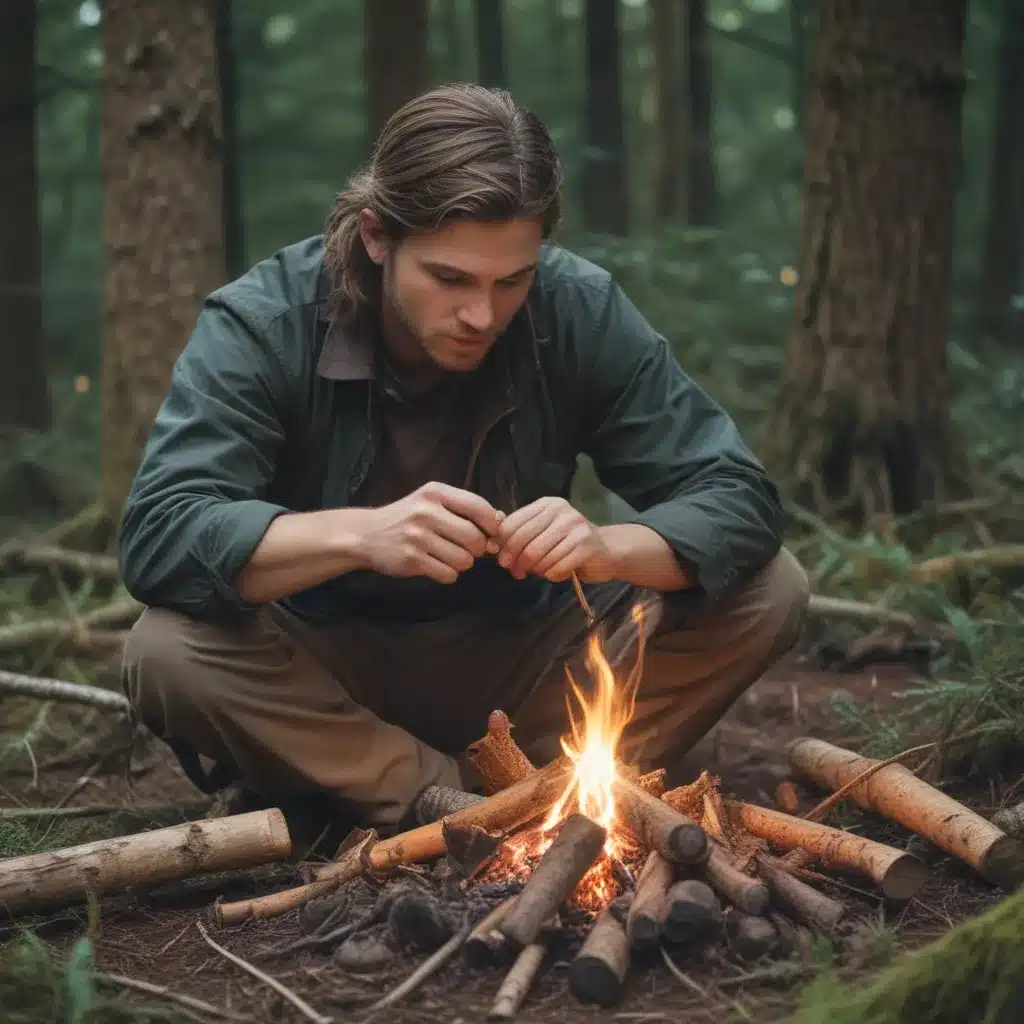
Venturing into the Heart of the Scottish Highlands
Ah, the Scottish Highlands – a vast, untamed wilderness that has captured the hearts and imaginations of adventurers for centuries. As I stand here, gazing upon the rolling hills, towering peaks, and serene lochs, I can feel the call of the wild beckoning me to explore its depths. But before you embark on your own journey into this enchanting landscape, there are a few essential bushcraft skills you’ll need to master.
Mastering the Art of Wilderness Navigation
Let’s start with the most fundamental skill: navigation. In the Highlands, where the terrain can be rugged and the weather unpredictable, being able to find your way is crucial. First and foremost, familiarize yourself with the art of reading maps and using a compass. As this video demonstrates, understanding how to orient yourself using these tools is the key to staying on track, even in the most challenging conditions.
But that’s not all. Developing your orienteering skills is just as important. Practice techniques like taking bearings, following compass headings, and triangulating your position. And don’t forget to have backup methods, such as using natural landmarks and celestial navigation, in case your primary tools let you down. As the experts at Nuvance Health advise, being a skilled navigator is crucial for anyone venturing into the wild.
Building a Cozy and Secure Shelter
Now, let’s talk about shelter. When the sun dips below the horizon or the weather turns nasty, having a well-constructed shelter can mean the difference between a comfortable night’s sleep and a miserable, sleepless ordeal. The first step is to identify suitable locations – look for areas that offer natural protection, like the leeward side of hills or cliffs. Avoid low-lying spots prone to flooding, and be mindful of potential hazards like loose rocks or dead trees.
Once you’ve found the perfect spot, it’s time to put your building skills to the test. Depending on the materials available, you can construct all sorts of shelters, from debris huts and lean-tos to snow caves. As this video demonstrates, the key is to use the natural resources around you to create a secure and insulated refuge that will keep you warm and dry.
Securing a Reliable Water Supply
Now, let’s talk about one of the most essential elements for survival: water. In the vast, rugged landscapes of the Scottish Highlands, finding clean, drinkable water can be a real challenge. Your first task is to learn how to locate potential water sources, such as streams, rivers, and even melting snow or ice. As the Nuvance Health experts advise, keeping an eye out for signs of vegetation and animal tracks can be a good starting point.
But finding the water is only half the battle – you also need to know how to purify it for safe consumption. From boiling and filtering to using chemical treatments, there are various methods you can employ to ensure that your water is free from harmful contaminants. Remember, even if the source looks clean, it’s always better to be safe than sorry when it comes to your health.
Mastering the Art of Fire-Making
Fire is not just about creating a cozy ambiance; it’s a critical survival tool in the wilderness. Knowing how to start and maintain a fire can provide you with warmth, the ability to cook food, and a sense of security in the darkest of nights. But before you can harness the power of fire, you need to understand the importance of gathering the right materials.
Start by collecting dry tinder, such as twigs, leaves, and small branches. Look for deadwood that snaps easily, as this indicates it’s dry and ready to ignite. Gradually work your way up to larger sticks and logs to sustain the fire once it’s been lit. As this video demonstrates, there are various fire-making techniques you can try, from using a ferro rod to the classic friction method. The key is to practice and develop your skills before venturing into the wilderness.
Foraging and Securing Food Sources
In the rugged landscapes of the Scottish Highlands, finding sustenance can be a real challenge. But fear not, my fellow adventurer – the wilderness holds a bounty of edible plants, berries, and even insects that can keep you nourished. The key is to educate yourself on the local flora and fauna, learning which items are safe to consume and which to avoid.
Of course, foraging alone won’t be enough to sustain you in the long run. That’s why it’s essential to also master the art of trapping and fishing. Study different trap designs, such as deadfalls and snares, and practice your fishing techniques using natural bait and simple hooks. Remember, as the experts on Quora suggest, mastering these skills takes time and practice, so be patient and persistent.
Embracing the Wild with Confidence and Resilience
As you journey into the heart of the Scottish Highlands, remember that the wilderness is a force to be reckoned with. But with the right mindset and the essential bushcraft skills under your belt, you can conquer any challenge that comes your way.
Cultivate a positive, resilient mindset. Believe in your ability to adapt, survive, and thrive in the face of adversity. Stay calm, focused, and present, and let your instincts guide you through even the most daunting situations. Remember, the wilderness is not your enemy – it’s a magnificent, untamed realm that you can learn to coexist with, if you approach it with respect, knowledge, and a sense of adventure.
So, my fellow adventurer, are you ready to embark on a journey into the wild? Head over to Loch Ness Shores and let the spirit of exploration and the thrill of mastering bushcraft skills guide you. The Scottish Highlands await, ready to test your mettle and reward your courage with unforgettable experiences.

